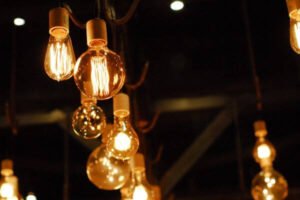Lighting plays a pivotal role in shaping the atmosphere and functionality of any space. The thoughtful selection of lighting fixtures goes beyond mere installation, evolving into an art that intertwines aesthetic appeal, functionality, and emotional resonance. In this article, we will delve deeper into the nuanced world of lighting, exploring how to transform spaces from dark to bright through a meticulous consideration of lighting options.
Understanding the Space’s Needs
Before immersing ourselves in the realm of lighting options, it is paramount to have a profound understanding of the specific needs of each space. Each environment comes with its own set of demands, whether it be for focused tasks such as reading or working, or for creating an ambiance that is cozy and inviting. Evaluating these needs serves as the foundational step in choosing lighting that not only illuminates but enhances the overall environment.
- Assessing Task Requirements: Identify the primary activities that will take place in the space to determine the type and intensity of lighting required for optimal functionality.
- Considering Ambiance: Gauge the desired ambiance for the space, whether it’s a vibrant and energetic atmosphere or a more subdued and relaxing setting.
Ambient Lighting: The Foundation for All Design
Ambient lighting serves as the cornerstone, providing a uniform base for the entire environment. Chandeliers, flush mounts, and ceiling fixtures diffuse light evenly, creating a pleasing atmosphere and ensuring that light is distributed uniformly across the space. For smaller spaces, recessed lighting emerges as a discreet yet highly effective choice.
- Choosing Fixtures: Explore a variety of fixtures to find the one that complements the design aesthetics while providing ample ambient light.
- Considering Space Size: Adapt the choice of ambient lighting fixtures to the size of the space, ensuring a harmonious balance between illumination and spatial constraints.
Task Lighting: Focus on Specific Activities
Task lighting steps in to cater to specific activities within a space, such as reading, writing, or food preparation. Desk lamps, pendant lights positioned over countertops, and adjustable wall sconces are exemplary instances of task lighting. This category of lighting provides focused illumination, spotlighting areas where particular activities are concentrated.
- Optimizing Workspaces: Tailor the intensity and positioning of task lighting to create well-lit and functional workspaces.
- Integrating Design Elements: Choose task lighting fixtures that seamlessly integrate with the overall design, ensuring a cohesive and visually pleasing environment.
Accent Lighting: Enhancing Specific Elements
Accent lighting is the key to accentuating specific elements within the décor, such as artworks, sculptures, or architectural details. Spotlights, track lighting, and recessed spotlights are go-to choices for accent lighting, introducing visual layers that elevate the aesthetics of the space.
- Highlighting Artistic Features: Strategically position accent lighting to draw attention to unique architectural or artistic features within the space.
- Creating Visual Hierarchy: Use accent lighting to establish a visual hierarchy, guiding the observer’s gaze to focal points of interest.
Decorative Lighting: Style and Personality
Decorative lighting transcends mere functionality, injecting style and personality into the space. Decorative pendants, floor lamps, and table lamps fall into this category, with each piece contributing to the overall aesthetic. Selecting fixtures that harmonize with the overall design transforms lighting into an integral and stylish facet of the décor.
- Harmonizing with Design Themes: Choose decorative lighting fixtures that align with the overarching design themes of the space.
- Creating Focal Points: Use decorative lighting to establish focal points, adding visual interest and sophistication to the room.
Color Temperature: Influencing the Atmosphere
The color temperature of lighting plays a pivotal role in dictating the atmosphere within a space. Bulbs with warmer color temperatures, such as yellows and oranges, imbue a cozy ambiance, while cooler tones like white and blue contribute to a more vibrant and modern atmosphere.
- Understanding Color Psychology: Delve into the psychological impact of different color temperatures and select hues that resonate with the desired emotional tone.
- Applying Color Temperature Strategically: Use color temperature strategically in different areas of the space to create varied atmospheres within a cohesive design.
Dimming Controls: Adapting to Momentary Needs
The ability to control light intensity emerges as a crucial aspect of lighting selection. Dimmers provide the flexibility to adjust brightness according to momentary needs and personal preference, offering the capability to create versatile environments that adapt to different activities throughout the day.
- Customizing Atmospheres: Explore the use of dimming controls to customize atmospheres for various occasions, from relaxed evenings to vibrant gatherings.
- Energy Efficiency Considerations: Implement dimming controls as a means to enhance energy efficiency by adjusting lighting intensity based on actual needs.
Sustainability: Choosing Efficient Options
In an era increasingly attuned to sustainability, opting for energy-efficient lighting stands as a prudent practice. LED bulbs, known for their reduced energy consumption and extended lifespan, offer a sustainable choice that aligns with eco-conscious principles.
- Advantages of LED Technology: Delve into the benefits of LED lighting, including energy efficiency, longevity, and reduced environmental impact.
- Long-Term Cost Savings: Highlight the long-term cost savings associated with energy-efficient lighting choices, making them not only environmentally friendly but also economically sound.
Conclusion: Illuminating the Path to the Ideal Design
By weaving through the intricate nuances of lighting options, from assessing the specific needs of a space to embracing sustainable and energy-efficient choices, you embark on a journey that transforms not only the visibility but also the ambiance and emotional resonance of your environment. From dark to bright, each category of lighting plays a distinct role in crafting an engaging and harmonious interior design. By skillfully balancing practical requirements with aesthetic aspirations, you illuminate the path to the ideal design, turning your space into a luminous and welcoming haven that reflects your unique style and preferences.

